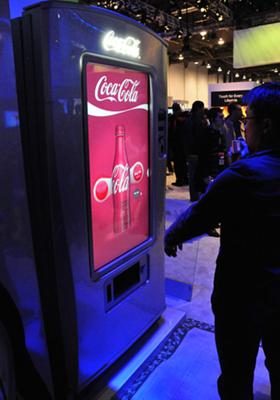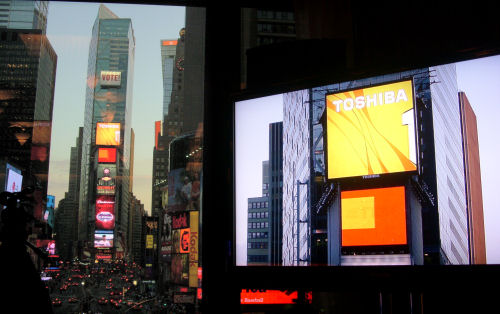More connected machines means more non-PC IT, more contextual signage
Ericsson is the single largest wireless communications equipment company today, and nearly every hardware manufacturer from consumer devices to network infrastructure uses some piece of Ericsson's technology in their products.
The company's long-standing vision has been to create a world with 50 billion connected devices by the year 2020.
Last July, the company released a projection that said 5 billion people already subscribe to a mobile service, and every day 2 million more are added. At that rate, it won't be long before the mobile subscription market is completely saturated. So to pack the world with 50 billion connected devices, you can't just worry about connecting people to the network, you must also worry about connecting machines to other machines.
While the field of machine to machine communications (M2M) lacks a lot of the end user appeal that consumer communications has, it's got an almost science fictional whimsy to it, with seemingly endless possibility for innovation.
For the last three years, I've had regular meetings with Ericsson's Vice President of Mobile Broadband modules, Mats Norin, and we typically discuss consumer electronics and the wireless needs of hardware manufacturers in that space. But after Ericsson's recent debut of two smaller, thinner mobile broadband modules, my meeting with Mr. Norin was to talk mostly about the future of M2M mobile broadband.
"Always-on consumer connectivity started with PCs, then moved to netbooks, and has now moved into tablets and even smaller devices, but we're looking at machine to machine," Norin said. "For example, if you connect a vending machine to the mobile network, you as a customer may not even need to have cash. You could just send an SMS to purchase from the machine."
This type of connectivity could actually sidestep the growing area of Near Field Communications (NFC) that has recently been gaining traction among banks, mobile operators, and hardware companies. Both of these technologies seek to replace cash because revenues have been shown to increase up to 50% when customers don't need to hand over currency.
Further, the same connection that can be used to connect the user with the machine can be used to connect the machine to a central management system, creating a stronger IT infrastructure for non-PC devices.

Inventory management, for example, would be much simpler. The machine would be able to tell you what needs to be filled every week so you can have exactly the right amount of stock needed. When dealing with perishable goods, this kind of tight inventory control could ultimately lead to less waste.
Beyond inventory control, these connections could also share maintenance data. This would apply not only to vending machines, but for any machinery, like home appliances.
"A call to a customer service help desk is oftentimes total mumbo-jumbo," Norin said. "Customers cannot properly report a fault with their washing machine, and repairmen may make a visit to your home and not even have the appropriate parts to do the job; then they have to go back to the warehouse, or order a part, and the whole thing costs a fortune."
With remote management, repairman can know exactly what part has failed, and exactly the type of on-site support that is required.
In a field like digital signage, a persistent connection would mean advertisements that can change more quickly, be more personalized, and even allow user engagement measurement which is not available in traditional displays.

"You can imagine the possibilities a broadband connection gives an in-store display. Think about a sign in a shop window that is equipped with a camera," Norin said. "When you walk into the store, it takes a picture of you, detects your sex, height and weight, and then correlates that information with the day's weather data. If it's a hot day outside, maybe the sign will recommend a new pair of shorts or something like that. With face recognition, it could even welcome you back with a personalized message."
Most digital signs in shopping centers are set up with a wired or wi-fi connection to a local display terminal; and many of the big digital billboards in Times Square, New York, require a physical update to change the display's content. With a mobile connection, updating becomes quicker and easier, and opens the door for contextual signage.
"If the weather goes bad, the companies advertising rubber boots get their big chance," said Norin. "Then when the sun comes back out, maybe ads for towels or something can pop up."
